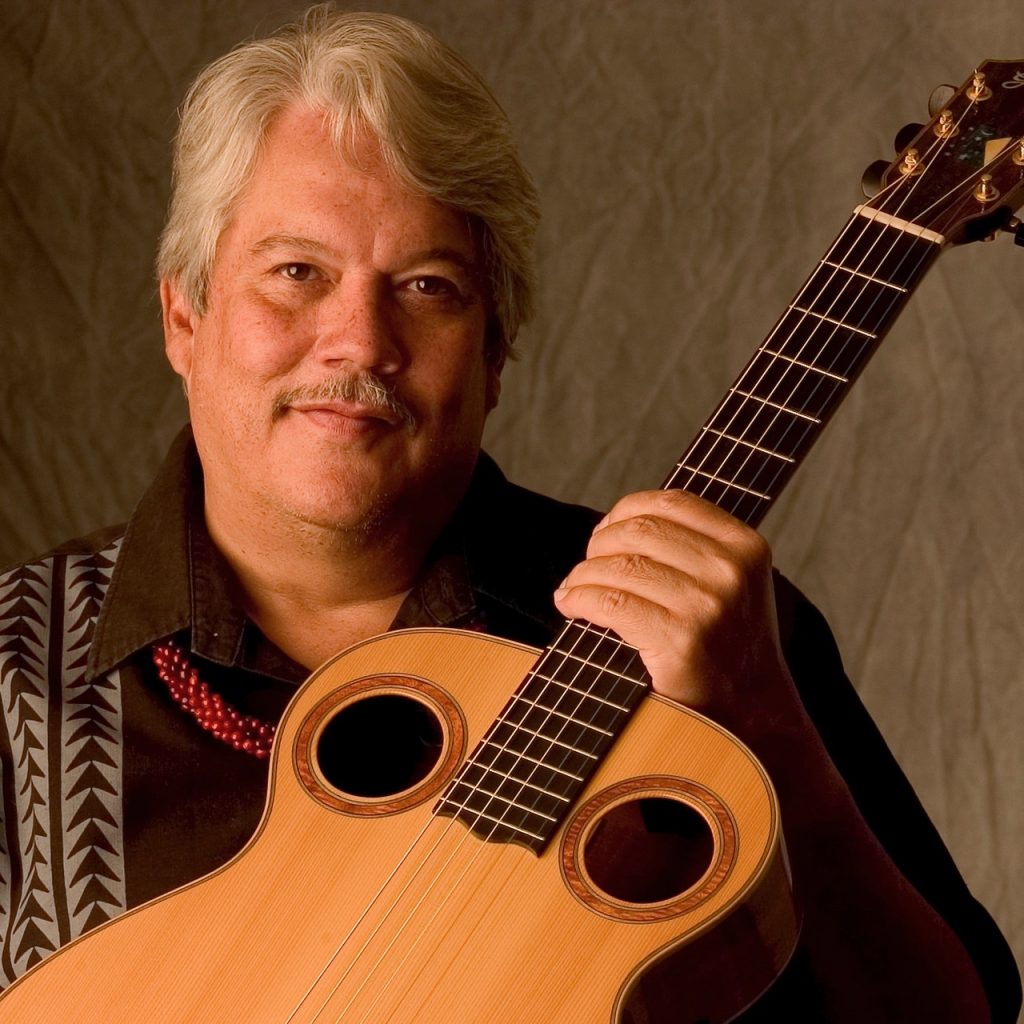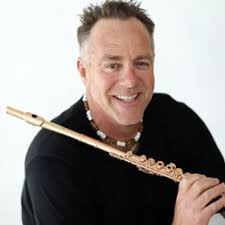Geoffrey Keezer and His “Court”

Geoffrey Keezer [photo used by permission of La Jolla Athenaeum]
Opening this “intimate evening of duets,” as Keezer called it, was the multi GRAMMY® nominated jazz vocalist Denise Donatelli, who began her stint with the standard “All Or Nothing At All.” This tame and ostensibly safe choice was met tentatively and with pitch problems, but things really got rolling on the following selection. The duo’s presentation of Benny Carter’s 1936 gem “When Lights Are Low” unfolded as a clear narrative whose lyrics were musically reflected in Keezer’s adroit accompaniment. Keezer’s impressionistic mirroring of lyrics became a hallmark of his playing throughout the evening. A long, complex and alluring passage of what can only be called “composed scat” singing ensued. Here the pianist and the singer executed composed unison lines with mostly meaningless syllables in an impressive virtuosic display. Billy Strayhorn’s “Daydream” allowed another opportunity for the Donatelli/Keezer duo to impressively spin a narrative whose lyrics were perfectly reflected in the piano accompaniment.
Opening up the “duo” concept to allow for smooth transitions into the next pairing, vibraphonist Joe Locke assumed the stage with Donatelli and Keezer. Sting and Robert Mathes’ little known “Practical Arrangement,” written for but later dropped from their Broadway show “The Last Ship,” was a perfect landscape for sonic instrumental reflections of the song’s discomfiting and slightly shocking lyrics. Donatelli’s clear enunciation and seamless phrasing seemed to float over Locke and Keezer’s sonic cloud. The house sound unfortunately became the musicians’ opponent, but even though the vocal microphone completely failed, Donatelli powered through acoustically, and nonetheless succeeded in delivering a faultless and clearly audible performance.
The singer’s exit from the stage left Keezer in the company of the almost indescribably great Joe Locke. I have always been a big vibes fan, and in fact I grew up on Bobby Hutcherson, Milt Jackson and Gary Burton, among others. Yet, I have never encountered vibraphonist virtuosity on the level of Joe Locke’s. Brandishing the apparently de rigeur four mallets (as opposed to the traditional two), Locke spun improvised lines on the duo’s first, unidentified number that were positively kaleidoscopic. He made harmonic interpolations that one usually only associates with the very finest saxophonists, trumpet players, pianists and guitarists. In fact, although Locke freely confesses the influence of vibes giants from the past, the most direct stylistic comparison for my ears would be to the late tenor saxophonist Michael Brecker. Locke’s harmonic substitutions along with the internal phrasing of his improvised lines sounds very similar to Brecker. This may not be such a huge and implausible assertion inasmuch as Locke worked extensively with the late Bob Berg, another proponent of the advanced, post-Coltrane New York saxophone style whose ideas may have rubbed off on the vibraphonist.
Keezer dedicated his original “Daly Avenue” to the “house concerts” movement. These concerts are typically presented in private homes by individual music lovers along with a phalanx of their fellow travelers who then commit to presenting artists from throughout the country. Keezer called it, “Keeping music alive by any means necessary,” and as one who has recently decided to abandon the music profession as my chief source of income in favor of a more Ivesian path, I must admit to having my heartstrings plucked by this assertion. “Daly Avenue,” which is available as a CD or download from either performer’s website, again offered a platform for virtuosic, but not self-aggrandizing display. Locke’s harmonic peregrinations continued to slay me with their absolutely lithe, balletic yet muscular virility. The two musicians sprung to ridiculous heights and delivered a shockingly effective performance.

Gillian Margot [Photo (c) Jacob Blickenstaff, used by permission of the artist]
The best was left for last as Keezer and Margot both welcomed the quietly magnificent Keola Beamer, master of the slack key guitar. Collaborating on Ewan MacColl’s “The First Time Ever I Saw Your Face” (made famous by Roberta Flack), the three musicians managed to create a cumulus-like stasis that was anything but static. Subtle shifts of harmony, played in an impossibly slow tempo allowed the music to float, almost inanimately. The perfect blend of voice (again, nearly vibrato-less with spot-on intonation), guitar and piano was never marred by overt assertion, but was allowed to form, gather, disperse and re-form. This was a level of virtuosity that one rarely encounters, almost a virtuosity of elimination, achieved through the paring away of any excess notes or motion.

Keola Beamer, photo used by permission of the artist
Beamer opened his duo segment with the Hawai’ian song, “Pupu Hinu Hinu” which was written by his mother, Nona Beamer. It was immediately obvious by Beamer’s presence, words, body language and humor, that we were in the presence of deep greatness and even deeper inner peace. The song came across like a gentle breeze on the beach at Molokai. Although Beamer is especially well known for helping to memorialize Hawai’i’s profound well of traditional music through his recordings, performances and publications, this fifth generation musician is a very subtle virtuoso. “Pupu Hinu Hinu”, although maintaining its original form, structure, lyrics and chords, was performed and interpreted by a fully informed contemporary musician. He had rethought its simple folk harmony by adding many more complex, interesting and descriptive chord substitutions and extensions. And yet, it never sounded like an exercise or even remotely ostentatious since he maintained the peaceful simplicity of the original.
We were privileged next to enter into his private world. “Kaulana Na Pua,” as explained by Beamer was originally a protest song that came from the Islands’ darkest days of occupation, cultural suppression and attempted elimination. When he introduced the song, suddenly overcome by the personal sadness of being separated from his family since he’s on the road and perhaps feeling the pain and suffering of his people through the generations, he came to quiet tears. The audience followed his lead. There are not words for the depth of expression that emanated from the stage.
Finally, Beamer’s wife, hula master Moanalani Beamer joined the two musicians for a dance presentation in “Ho’ouna ‘ia mai ku’u“. Beginning with a description of the family’s home along with some moving words about its beauty and natural wonders, we were privileged to hear Keola Beamer perform on the nose flute. Who knew? This was a first for me and probably for the rest of the audience, too. Mrs. Beamer’s expressive dance moves accompanied by Keezer’s sensitive pianism and Mr. Beamer’s terrific slack key guitar playing all conspired to create one of the truly greatest moments in music that this listener, at the very least, has ever experienced. If I ever am privileged to inhabit this musical space again, I will feel as if I had accomplished the equivalent of successfully bottling lightening.

Yochanan Sebastian Winston, Ph.D. has performed throughout the United States, Europe and Latin America. His repertoire spans classical, jazz, klezmer, new age, contemporary, rock & roll and pop and is very active as a composer. Dr. Winston holds a Ph.D. from the UCSD, a Diplôme from the Conservatoire National de Region de Boulogne-Billancourt (France), and a Master’s and Bachelor’s of Music from the Manhattan School of Music in New York City.
